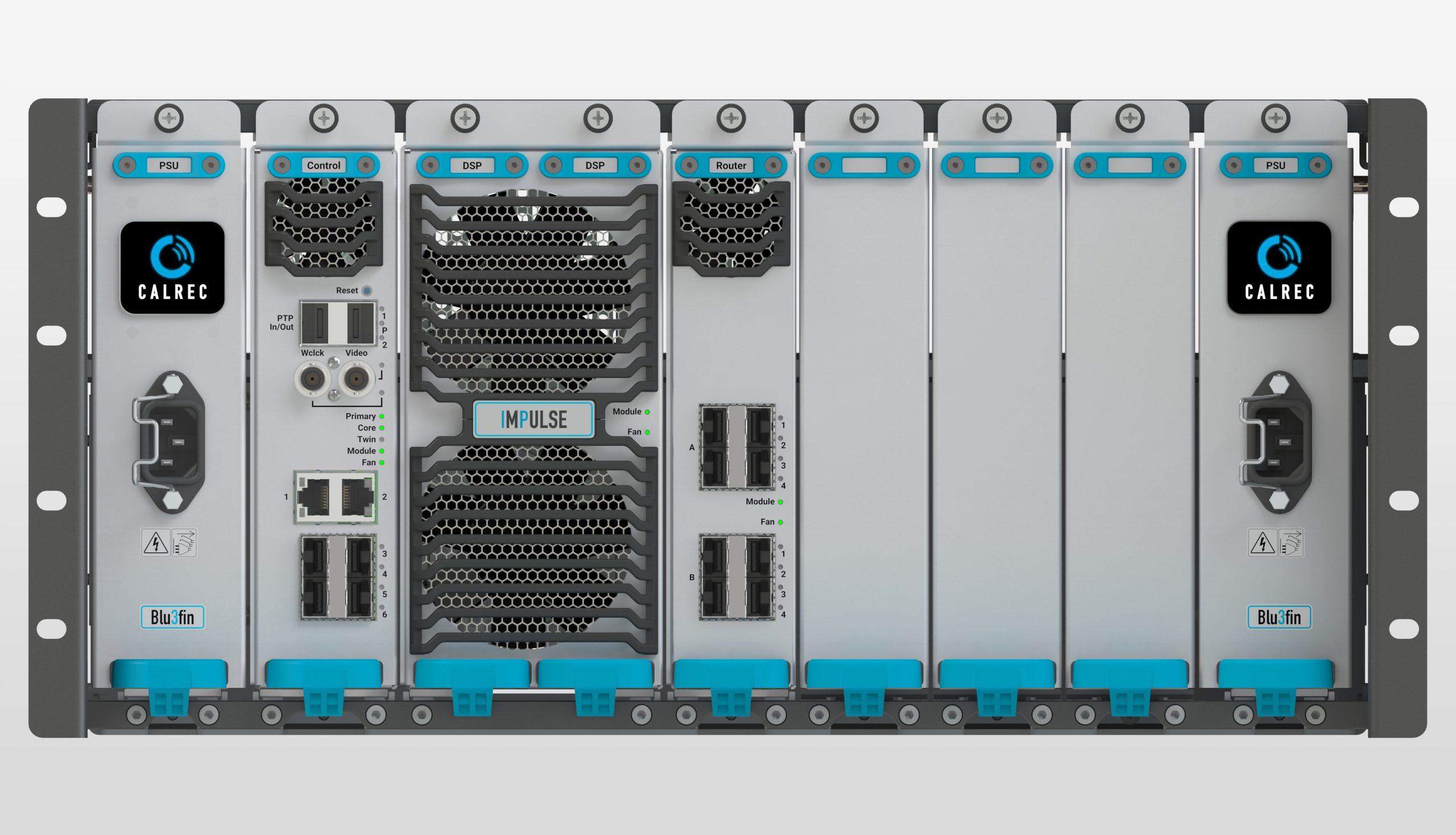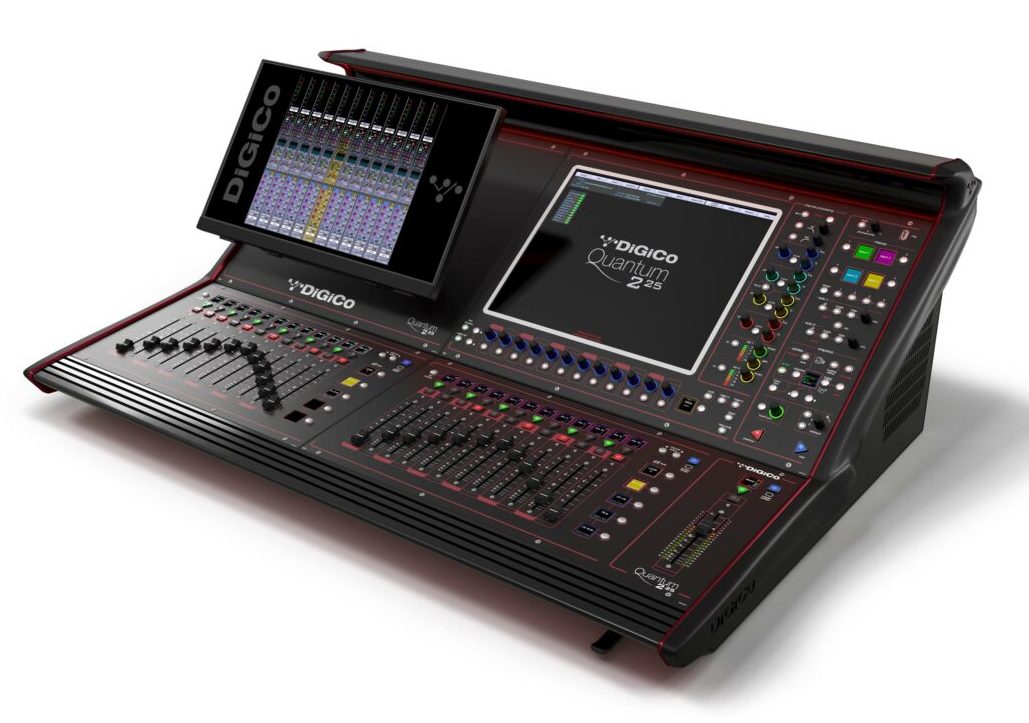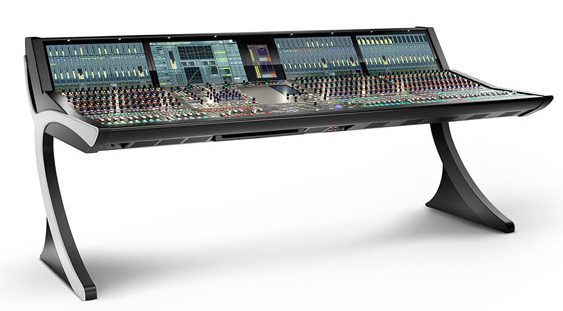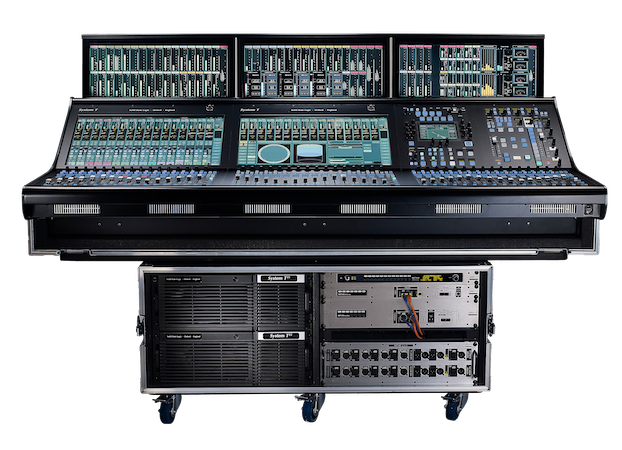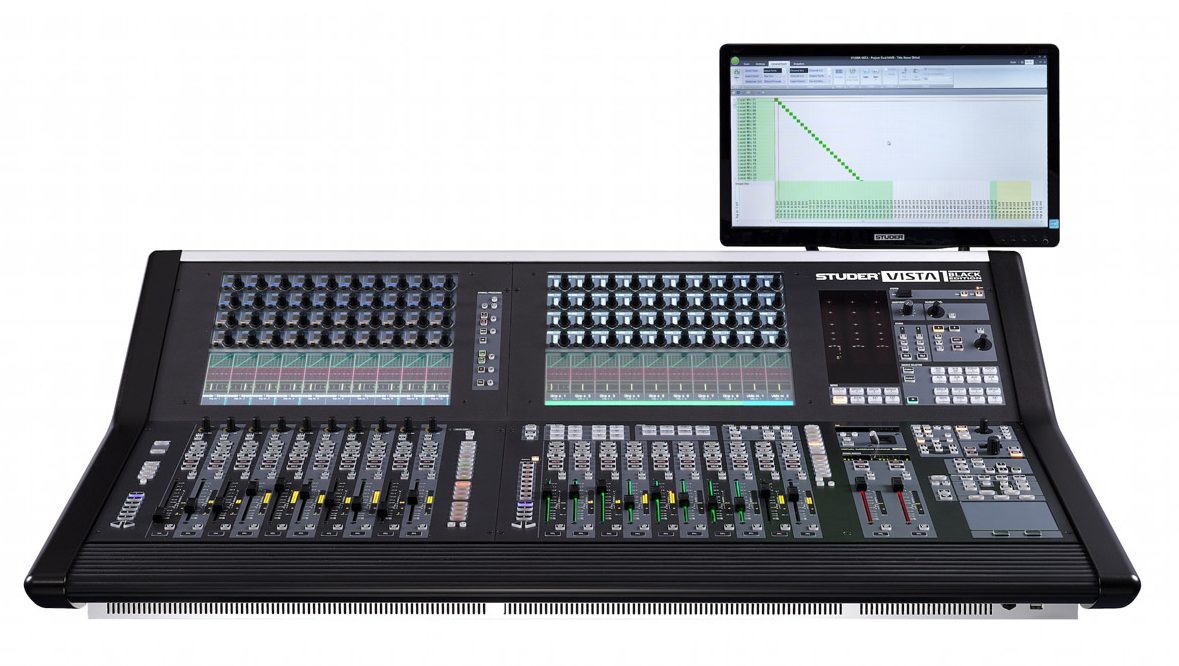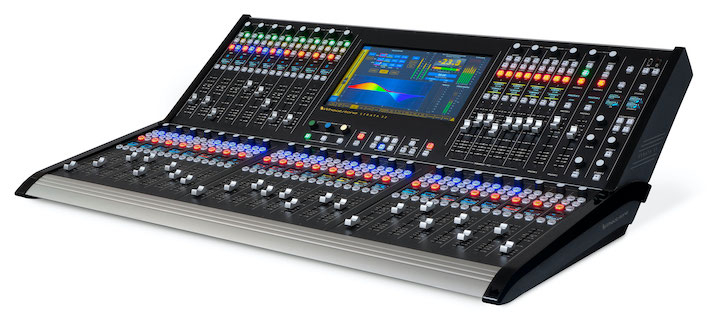Tech Focus: Audio Consoles, Part 2 — Remote Operation Continues To Grow
Diversity in size and functionality marks leading products
Story Highlights
Remote audio-mixing consoles for broadcast are still a relatively rarefied category at the high end of the market, but diversity within the group is increasing, thanks to growing demand for consoles of various sizes and functionality. Here’s an overview of the leading contenders.
Click here for Tech Focus: Audio Consoles, Part 1 — Evolution of IP Connectivity, Remote Access Accelerates.
Calrec
Both remote broadcasting and remote working have had accelerated learning curves. Many sports productions, for example, are being mixed remotely or via virtualized surfaces. Smaller consoles like Calrec’s compact Brio have been used as remote work surfaces from mixers’ homes to provide live on-air mixing, and Calrec’s Assist web GUI has been implemented with Apollo, Artemis, and Type R work surfaces, as well as with virtual cores like VP2 and Calrec’s ImPulse IP engine, to provide control on a web browser from remote locations. Meanwhile, the modular Type R IP console is increasingly used for virtualized production on dedicated hardware, along with the Assist web interface. Calrec’s RP1 continues to provide comprehensive remote-broadcast capabilities and local IFBs at a remote venue from a centralized studio environment.
As the industry continues to converge on IP workflows, Calrec has introduced more products to meet the need. Its IP ImPulse core has a native SMPTE 2110 backbone and is compatible with existing Apollo and Artemis control surfaces to provide an upgrade path to IP infrastructures. ImPulse is fully NMOS IS-04/05–compliant, which is critical to unifying IP workflows from different vendors, and features 3D immersive path widths and panning with full monitoring and metering and height and 3D-pan controls. Upgrading to IP infrastructures still requires careful planning; Calrec’s Gateway products smooth the transition and allow more flexibility at multiple outside broadcast events where both proprietary and IP networks are used. Both H2-IP Gateway and the AoIP modular I/O controller card are SMPTE 2110–compatible and provide an interface between Calrec Hydra2 and IP networks to allow control data and audio labels to be passed in both directions. www.calrec.com/
DiGiCo
Launched in February, the Quantum225 is DiGiCo’s newest digital audio-mixing console and includes 72 input channels with 36 busses plus a master bus and a 12×12 matrix. There are four MADI ports and dual DMI ports for added connectivity (Dante, Hydra, AES, Waves, etc.), as well as 8×8 analog and four AES channels for local I/O, built-in UB MADI, optional optics and Waves SoundGrid, plus dual PSU. The Quantum225 incorporates several Quantum features: Mustard processing-channel strips, Spice Rack plug-in–style native FPGA processing options, Nodal processing, and True Solo. When specified with the new 6RU DQ-Rack with integrated Dante, the system meets the demands of an AoIP networking environment. Other amenities include a 17-in., 1,000-nit TFT multitouch screen plus 41 additional mini TFTs, 25 100-mm touch-sensitive faders, and a custom-designed, multipurpose mounting bracket that can accommodate an additional channel or overview screen, laptop, KLANG:controller, or other device. www.digiconsoles.com/
Lawo
Lawo consoles with new A__UHD Core technology are IP-based and support current and evolving industry standards for audio-, video-, control-, and data-format interoperability. The mc² Series mixing consoles — mc²96 Grand Production Console, optimized for IP production environments; mc²56, available with optional surfaces that provide extra free controls or dual faders; all-in-one mc²36 — are offered in multiple configurations with physical console surfaces, channel capacity, and frames optimized for everything from mobiles and flypacks to large production systems.
Lawo also offers a full range of solutions for remote-production and automated-mix applications, including standalone cores. The mc² Micro Core universal networked audio engine, the Compact Engine AES67 audio node with on-board DSP, and the Power Core 1RU IP-based mix engine with modular I/O options can perform all audio-mixing and -routing functions under remote control of mixers or third-party automation systems. Lawo’s PowerCore is a fully featured remote-production solution for mc² audio consoles with integrated modular I/O, DSP, and IP streaming capabilities. The 1RU device combines modular audio I/O and high-density DSP functionality in a WAN-capable IP node. The smaller PowerCoreGateway is a powerful and adaptable 1RU IP I/O node, a modular audio stagebox for meeting all I/O requirements to serve professionals who may require additional DSP power later for further applications.
Lawo’s new A__UHD Core ultra-high-density IP DSP engine for mc² consoles uses the IP network as an extension of the console core’s backplane and thus can be located anywhere on the network. Its processing density, with 1,024 mc² fully featured DSP channels, can be either used by a single mc² console or shared among up to four consoles.
All of Lawo’s consoles, cores, stageboxes, control software, and Nova Series routers offer multiple configuration options with protocols supported for automation and studio/remote management applications, including the multivendor-capable VSM Virtual Studio Manager IP broadcast-control system. Lawo’s Mix Kitchen for remote operation comprises Lawo hardware, readily available off-the-shelf tools, a laptop, and the company’s mxGUI software (included with all mc² Series mixers) allow A1 engineers to remain in control of the Lawo hardware on the broadcaster’s premises.
HOME, Lawo’s management platform for IP-based media infrastructures, is natively built on a cloud-ready microservices architecture, enabling users to connect, manage, and secure networked production setups from the ground up. Furthermore, it provides centralized access and control for all Lawo gear within a setup. HOME helps broadcast professionals address some of the most demanding requirements of modern IP infrastructures, including automated discovery and registration of devices, connection management, flow control, software and firmware management, scalability, and security. Lawo’s HOME platform is based on open standards — such as ST 2110, NMOS, IEEE802.1x, and RADIUS — and follows LUX, Lawo’s unified-experience design principles, which provide a consistent workflow across all Lawo IP products. lawo.com
SSL
System T is a fully networked broadcast-audio–production environment with IP-based, network-native control and audio infrastructure. System T has a highly configurable architecture and a range of hardware and software control interfaces that can be distributed anywhere across a network, including specific offerings for flypack systems and remote-production installations.
Control elements can be interconnected over routed VPN networks, allowing geographically wide deployment. Control interfaces include the flagship S500 modular large-format console and the flypack-ready S500m, delivering the same feature set as the S500 in a form factor more than 25% lighter and with turnkey flight-case solutions available. The compact S300 provides 16+1, 32+1, or 48+1 faders, offering the power and versatility of System T in a streamlined console layout that remains intuitive for operators with a wide range of skill levels.
The Tempest Control Rack (TCR) is suited to environments where the power of a broadcast-audio mixer is required but a traditional console is not: for example, automated broadcast environments and mobile/remote broadcast applications. Individual remote fader tiles and PC-based control software complete the System T control interface design. Any surface variant can connect to the highly scalable Tempest Audio Processor platform, which offers up to 800 processing paths and build-in effects rack. In addition, up to three consoles or control interfaces can access a single or fully mirrored redundant pair of Tempest processor engines. System T’s inherent AoIP infrastructure provides inbuilt Dante, AES67, and SMPTE 2110-30 audio-transport capability. A range of interfaces are available to connect to existing I/O infrastructure. solidstatelogic.com
Studer
The Infinity-powered Vista V and X broadcast mixing consoles retain the brand’s classic Vistonics and FaderGlow-enabled user interface, providing control of up to 1,000 audio DSP channels and an incredible 8,800 inputs and outputs. At the heart of the system is a range of Infinity DSP cores, deploying CPU-based processing to provide large numbers of DSP channels for large-scale, high-resolution audio processing and mixing, with full system redundancy without a single point of failure.
The Infinity DSP engine now comes in six versions: Core 300/600/1000, Compact Infinity Core 300/6000, and the Compact Core link Card/COTS server version — all providing A-Link high-capacity fiber digital audio interfaces scalable to 8,800 I/O. The high-density I/O system, known as D23m, is used to break out these A-Link connections to standard analog, digital, and video interfaces. The A-Link interface also provides direct connection to Evertz routers, allowing multiple Infinity systems to be connected and simplifying complex infrastructures. The Studer Vista range of consoles is completed with the Vista 1 Black Edition, an all-in-one compact, flexible, cost-effective console well-suited to a range of broadcast and live production applications. studer.evertz.com/
Wheatstone
The WheatNet-IP audio network is an AES67-compliant AoIP network environment comprising a wide selection of devices, software, and control surfaces. Its range of IP audio consoles include the large-format ARCUS, the compact STRATA 32 for remote sports venues and vans (64 channels in a 40-in. frame), and the new mid-market GSX with completely programmable controls and displays. The WheatNet-IP product line also includes glass-touchscreen virtual mixers — standalone as well as remote interface for complete control of home-studio hardware consoles — plus drag-and-drop software-development tools for easy creation of specialized custom graphic user interfaces and applications. Wheatstone also offers Streamblade and Wheatstream AoIP appliances for managing multiple streams, including metadata management, encoding, and a full suite of audio processing designed specifically for streaming. www.wheatstone.com/
